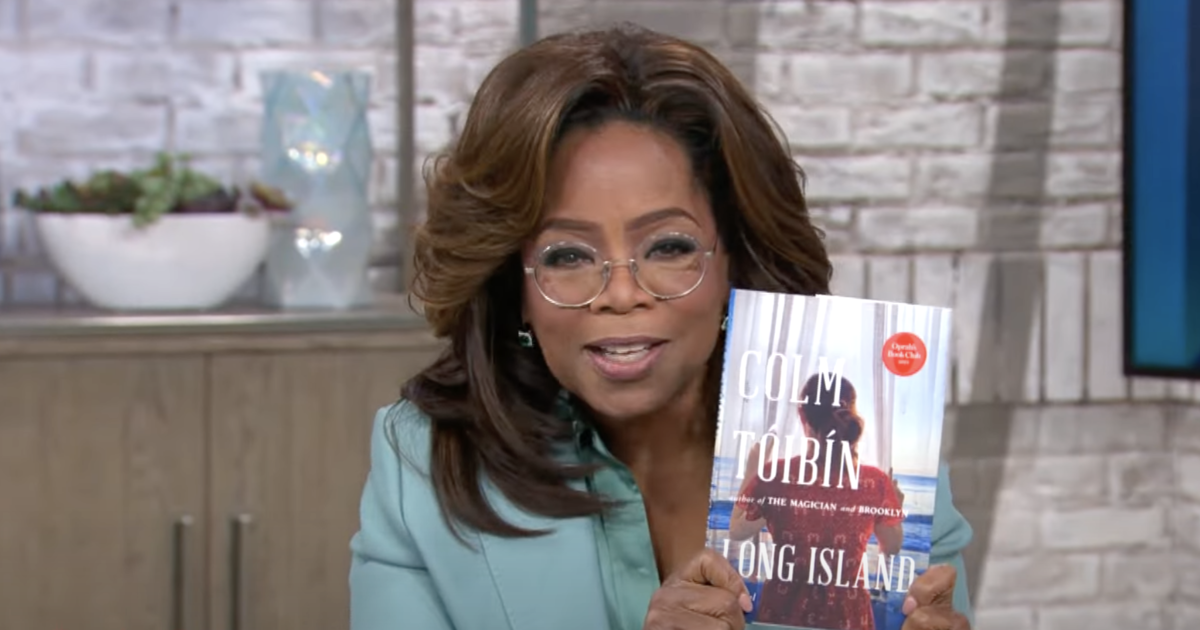A reader's guide for "The Covenant of Water," Oprah's book club pick
Oprah Winfrey has selected "The Covenant of Water," written by acclaimed author Abraham Verghese, as her newest book club pick.
To delve deeper into the themes and intricacies of the novel, readers can explore the following reading group guide crafted by Jennifer Baker. The guide also provides suggestions for further reading.
Follow along with the reading schedule at OprahDaily.com.
Purchase below to read. Prefer to listen? Audible has a 30-day free trial available right now.
Reading Group Guide by Jennifer Baker
The Covenant of Water begins in South India at the turn of the twentieth century on the eve of an arranged marriage. Initially, the young bride and her much older husband are nameless, while those around them are named. What effect does this create in your introduction to the main characters and how they evolve over time? When the bride is bequeathed the name "Big Ammachi" (p. 64) by her stepson, how does she grow into her title?
Big Ammachi finds out about "the Condition" that runs through her new family by means of dramatic tragedy, even though her husband and JoJo's aversion to water was evident early on. What impact do the circumstances of "the Condition" have on the decisions each generation makes for their future?
In what ways does the novel constitute an "epic"? What other genres do you identify in the novel?
For Digby and Philipose, expectations are passed down to them from their mothers. Digby's mother tells him, "It's only you bein' top o' the class that gets me through this hell. I dream o' yer success" (p. 87), while Big Ammachi thinks of her son, "How wonderful if his stubborn determination turned into a quest to cure the Condition!" (p. 229). How are Digby and Philipose continually plagued by alternate paths, even after finding their apparent callings? Do these men come to terms with their decisions?
Professions come to define many of the characters in The Covenant of Water: there are doctors, writers, domestic workers, and other laborers within these pages. How do the attributes of these characters reflect their work, as well as come to define their passions and personalities? Who is allowed to choose a profession freely in the novel, and whose futures are foretold from their birth?
In what ways do diagnoses change the trajectory of the lives of the characters? Do some characters experience a fear of being ostracized, either for themselves or for those they care about? How do characters view those labeled or seen as "afflicted" throughout the novel? Do those labels appear to inhibit characters, or allow them a different kind of freedom from community standards?
Discuss the marriage of Elsie and Philipose. What traits of each character may have contributed to the rifts in their relationship? How did the couple and those around them attempt to mend the marriage?
Consider how geography affects destiny for these characters. From Parambil to Madras to Scotland, Verghese's characters often find or seek refuge away from their original shores. In what ways is a sense of home and belonging threaded throughout the novel, and how do characters like Big Ammachi, Digby, Elsie, and Mariamma connect to or disconnect from the places where they were born and the homes where they eventually settle?
How does grief manifest for Digby over the years as he witnesses the decline of the women he loves? How does this compare to periods of grief for other characters?
Both Elsie and her daughter Mariamma face discrimination in their professional pursuits. How do these women push back against the misogynistic cultures they face? In what ways had they been assured that they deserved to pursue careers as an artist and a doctor, respectively?
A hospital in the Parambil community is an ever-present need, especially as preventable losses recur throughout the generations. What impediments—financial, social, bureaucratic—prevented the hospital from being constructed? Does the eventual construction of the hospital seem to be part of the destiny of the family at Parambil?
Throughout The Covenant of Water, various characters act as caretakers and demonstrate healing abilities. In what ways does healing intertwine with the practice of medicine for the salvation of characters?
Spanning about eighty years, The Covenant of Water depicts several political and environmental events that impact the characters in different ways. How do the politics of the world around them lead to the diverging philosophies of Mariamma and Lenin Evermore regarding how to help their people and nation at large? Which environmental events do you think had deep repercussions for other members of Mariamma and Lenin's families over the years?
How does Verghese illustrate the changes and consistency of segregation and the caste system in India over the decades? Did you find parallels between the treatment of lepers by outsiders of St. Bridget's and the caste divides of the characters in the spaces they reside throughout South India? How are the tensions of caste and class resolved, if at all?
How does the institution of marriage evolve over the course of the decades in the novel? How do the relationships and marriages at the end of the novel compare and contrast to that of Big Ammachi and her husband?
Suggestions for further reading:
The Love Songs of W.E.B. Du Bois by Honorée Fanonne Jeffers
A Burning by Megha Majumdar
The Night Watchman by Louise Erdrich
Homeland Elegies by Ayad Akhtar
Demon Copperhead by Barbara Kingsolver
How Beautiful We Were by Imbolo Mbue
Homegoing by Yaa Gyasi
Pachinko by Min Jin Lee
The God of Small Things by Arundhati Roy
A House for Mr. Biswas by V. S. Naipaul



